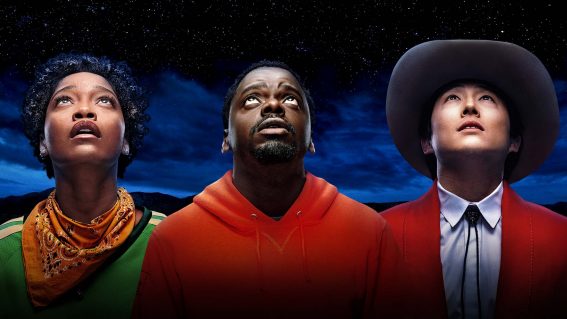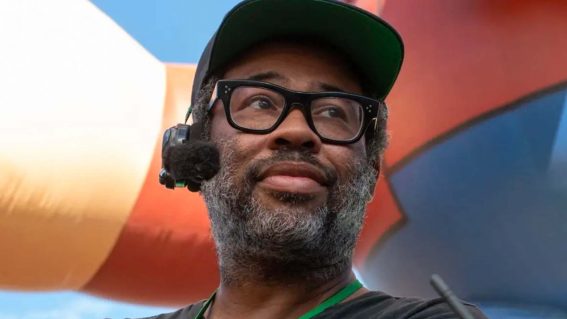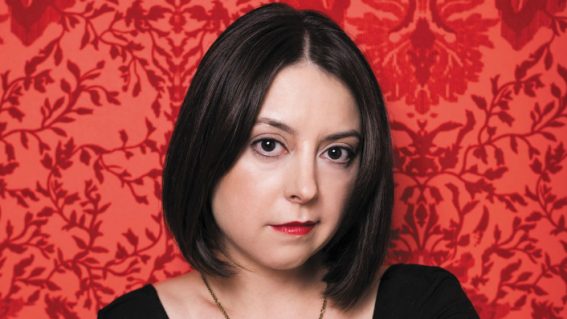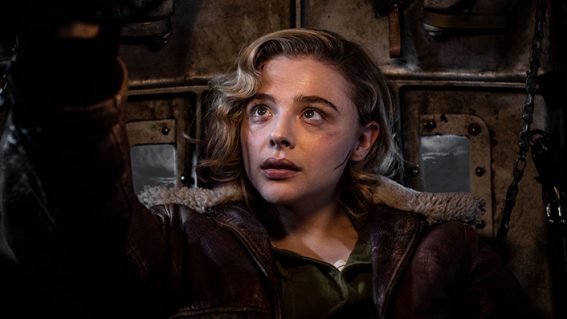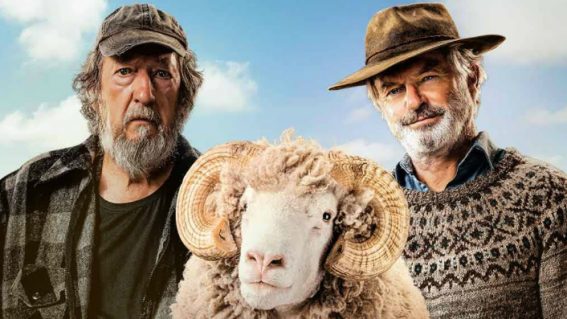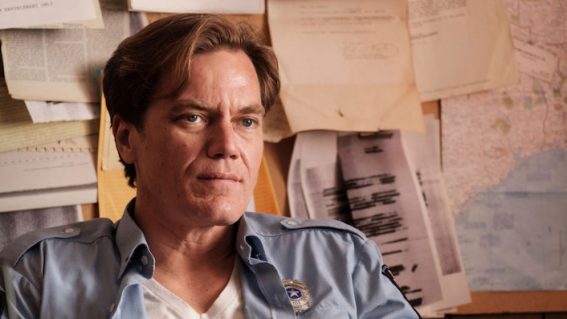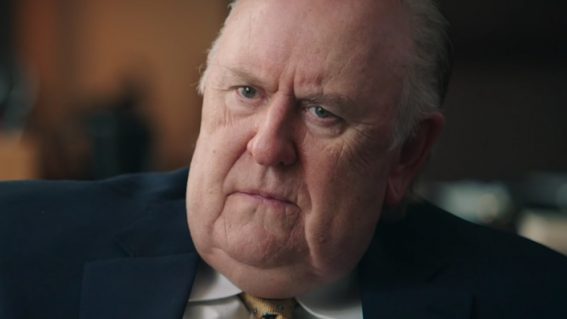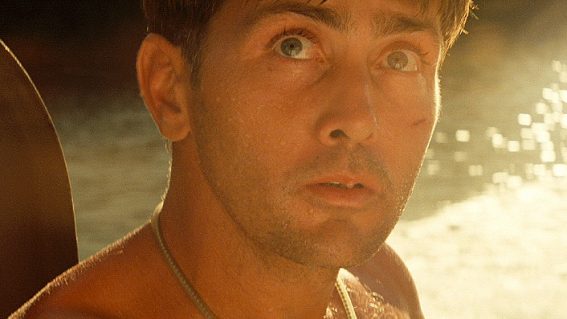Beast director Michael Pearce on his challenging study of psychopathy
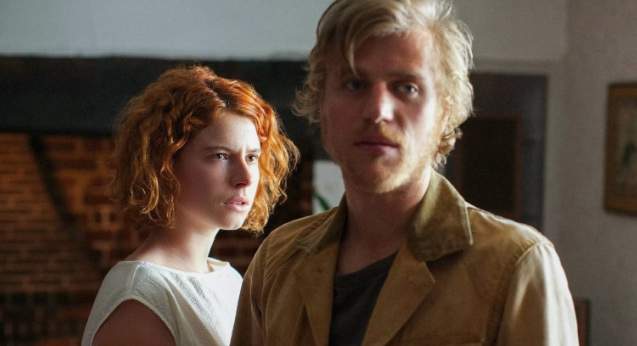
In psychological thriller Beast, Jessie Buckley stars as a young woman who finds herself pulled between the control of her oppressive family and the allure of Pascal, a mysterious outsider who empowers her to escape them. But when Pascal comes under suspicion for a series of brutal murders, she defends him at all costs and learns what she is capable of. Having described the film as compelling, Tony Stamp talks to director Michael Pearce about his feature debut.
FLICKS: Lead character Moll is a fascinating multi-dimensional character. When we meet her, she is self-harming. We learn that she has a dark past. She’s quite cosseted by her family. What was it that initially made you want to explore a character like that?
MICHAEL PEARCE: It came about in stages. Often when I’m writing a script, the characters remain in quite an archetypal form as I’m figuring out the story, and the sort of trajectory of conflicts, and where the tension’s coming from, and I’m painting in much broader colours. And it’s only through the following draft that I begin to dig into the characters and excavate them, and figure out who they are, and then [laughs] frustratingly sometimes, I then figure out who the characters are, and they want to do something different to the story I’ve laid out for them. And then I realise that’s my process.
But for Moll, it was a few drafts down the line when I realised that this was a woman that was imprisoned in many different ways. She’s trapped on an island. She’s trapped within this very dysfunctional family inside this house within a very hostile relationship with her mother. And then I figured out, I suppose halfway through the development, that she’s actually also trapped by the guilt of the crime she’s committed, that there’s something in her past that is kind of sort of keeping her anchored down. And that was the sort of general process. And then I started to realise that there were these kinds of fairy-tale resonances with the character. And you could kind of say that she was living a sort of Cinderella-type existence where she was emotionally overlooked by her family and her siblings. She was quietly living on the periphery of other people’s lives, but, internally, she was kind of gasping for emotional oxygen.
And I just found that quite an interesting mix of this person that was actually very conflicted inside, she’d committed this crime in her youth and was spending the rest of her life trying to prove to the world that she was a good person. And it’s kept her caged in a quite an intense way, and I just saw, yeah, something about prisons, about being a wild animal that’s been domesticated but then hemmed in to the point that they might lash out and do something dangerous and how she’s haunted by this incident. It became extremely fertile, all of these things. And the richer that became, the less interested I became in the crimes that were being committed. And I realised that this is ultimately a character-driven film. It’s not a police procedural. It’s all about investigation into this woman, into this character, and less an investigation into a series of crimes.
It’s really unique the way that it plays out in that, as you say, the serial killer storyline essentially plays out in the background of the film now and then. But in earlier drafts, was that more to the forefront?
Yeah. I mean, I think there’s something about the beginning. You want to make sure that the chronology of crimes makes sense and that there’s a logic. But I don’t want the latter half of the development of a script to bump up against some extreme illogic in who’s committing these crimes, and why, and why haven’t they caught this person. For me, I really wanted that to be sort of the tapestry, the canvas on which we’re figuring out these characters. So the beginning of the development was very much like mapping out who had committed these crimes, and why, and what was their motivation, and how have they gotten away with it. And I did a lot of research. I spent many, many months in the British Library reading every book they had on psychopaths [laughs] and reading about psychopathology, and I went into a very dark place. But even though that’s not necessarily the focus of the film, I wanted that to have a legitimacy that if a criminal psychologist watched the film, they would see a pattern of behaviour that made sense. It wasn’t a movie rendition of a psychopath, which are often kind of way off the mark. It was actually legitimised by research.
Once I’d done that and I’d got very much lost in that world, I really focused on the characters, and they kind of eclipsed what I thought was going to be the subject of these murders, and this psychopath, and the different aspects of psychopathology, and they just became richer. And I think that’s often the process with any film I like is that there can be a genre that they’re set in, but, ultimately, they’re always about an investigation into a character and the different dimensions of them. And so I think it was just a layering process of what’s in the background, what’s the world, and then who is the character?
Did you start getting funny looks at the library [laughs]?
Yeah. I mean, you don’t want to know my reading list. The trouble is, is that you research so heavily into that world and I was doing it, for close to, I think it was about a year. I was reading about so many cases, reading so many books on Ted Bundy or so many cases in the UK and a whole history of serial killers and their motivations. The trouble is you try and have a beer with a friend afterwards, and the only conversation you have in your head is about the different crimes that these people have committed. So I think I was bad company for about a year. You didn’t want to go for a beer with me [laughs]. But I needed to do it.
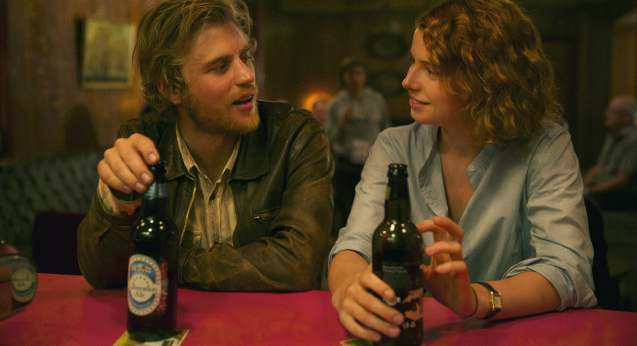
A lot’s been made about the fairy-tale connections or themes that run through the story. You’ve said that they sort of came in mid-way through the process. What made those themes stick with you and that you felt that they needed to be part of the film?
Well, I think part of it just came from the landscape. The film is inspired by the land. I’m from Jersey, the island where the film is set and it’s partly shot. The initial, let’s say, inspiration, the spark of the idea, came from a true case in Jersey. Very much like the characters are kind of inspired by certain people I knew or little observations I’ve made. But particularly when I was growing up in Jersey, I felt of it as a kind of fairy-tale landscape. It seemed like a very innocent place, and I think that’s just through the lens of childhood. Why I think fairy tales are very resonant with children is because people and places take on these very archetypal forms, in these kind of Jungian forms that exist deep in the back of our minds.
And so I think it’s just that. In that it’s partly just inspired from somewhere which I saw as sort of a fairy-tale landscape because these inspirations kind of snuck up. These resonances were embedded in the script without me knowing. I assume that’s where it’s come from, but then I also just found it was a very dynamic story template from which to kind of mitigate it being a more traditional police procedural. I felt like if I concentrated a bit more on it being a kind of adult fairy tale, it just sort of separates it from being something very familiar. But also, I felt like it was going to provoke in the audience more of the type of questions that exist in fairy tales about one’s morality and moral decisions and about those coming-of-age processes that we go through of leaving the house, of being guided by our curiosity, of figuring out that the world is mixed of Prince Charmings, and Beasts, and wolves, and, sometimes, those different kinds of characteristics might come in the same person. And I think fairy tales are often about the time when you’re a child and the world becomes more complicated than you thought it was, and there’s more nefarious characters out there, and you have to now navigate, with your own intuitive knowledge, how to avoid that danger.
There’s been so many great films by David Fincher and a lot of bad films and average TV shows about police procedurals or crimes. And I thought, “We’ve seen enough of that. It needs to distinguish itself in a different way.” And so I just kept on returning to that because it just felt very rich, and it seemed to provoke the more interesting questions for me.
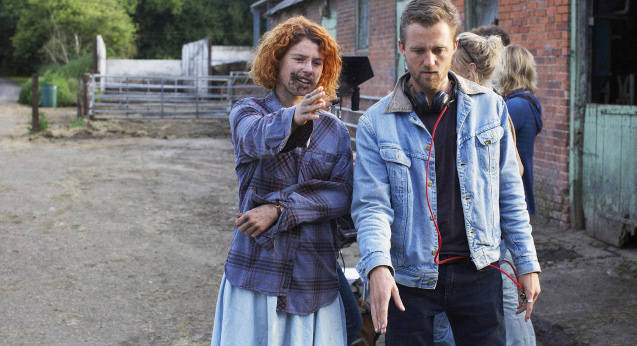
It is a thoroughly ambiguous film, and you’re constantly playing on where the audience’s allegiances should lie, or at least that was my experience of watching it. Was that something that you were conscious of when you were writing the script, or did it come into play more during filming?
No. That was there in the script once it dawned on me that it wasn’t going to be an investigation into a series of murders. It was going to be an investigation into this woman, and it was going to be about, yeah, her motivations, and the question should arise about why is she doing this. Is she being blinded by love? Is she a seemingly innocent person that is unknowingly in physical danger? Is she courageous? Is she just standing by her lover? Is there a more sinister dimension to her? Is she attracted by the danger that he represents, and this is some kind of way, deep down, that she’s able to take revenge on the people that have oppressed her? That seemed where really the film was happening, and, to be honest, even less on “is he or isn’t he the killer”. I found that that kind of question only has so much mileage, and I felt like that inevitably would be going on in the audience’s mind.
The questions had to be about her. Does this woman posses some kind of preternatural darkness that I didn’t see? She committed this crime in her youth. Is that the thing that defines her, or is it this other person that seems quite innocent? And I love it in movies when I’m put in a place of jeopardy with regard to my relationship to the characters. When you’re set with your allegiances at the beginning and they’re the same through to the end, no matter how good the film is, I find it can be a quite tiring process because I know where I stand. Whereas, if I’m put on shaky ground, and I have to question my allegiances…
The way I described it to my producers is that I wanted to create a very firm attachment to the character, almost like an umbilical cord between the audience and the character. And then, as the film progresses, we’re going to stretch that umbilical cord to the point where it might sever. And then the audience is kind of orbiting out and watching the rest of the film, and they don’t know whether they’ve invested in the right person or not. And that seemed like a very interesting type of tension than for it to be constantly about whether this guy is the killer, or did she find a blood stain on his shirt as she was doing the laundry [laughs], you know? I think maybe we’ve seen that before.
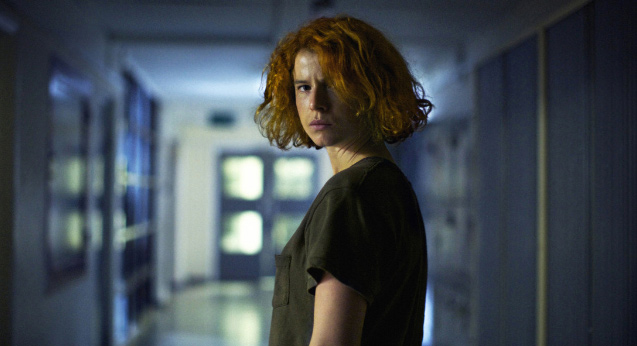
I came out of it feeling quite morally queasy and feeling partly implicated. How did your producer respond to that idea?
They really got it. Partly because, at the end of the day, this is a really familiar genre. I mean, it always kind of has been. And especially over the past 8 years or 10 years, there’s been a lot of TV shows about serial killers set in small provincial towns. A lot of Nordic, kind of Scandi TV shows as well. And some of them are great, and they kind of broke the mold in other ways, but there’s a lot of tropes with this, let’s call it sub-genre, the serial killer drama. And when you’re doing a film now, I think the game is tougher. I mean, in a good way. I think the bar is set higher. In any genre that you operate within, there has to be a sort of concerted attempt to do something different, and to refresh these images, and to sort of maybe demythologise the characters that we’re familiar with, or to operate against the grain of how this genre usually works.
So I think they were quite excited by this idea that it was going to be about this character. And the ending might not give you a firm answer about who the killer is. It might not, depending on the reading of the film, but it was definitely going to disrupt and challenge the audience by the end. And I wanted to bring the audience into a place where you thought you were watching the story of a damsel in distress at the beginning, and then, at the end, only retrospectively do you realise that you’ve watched the origin story of some kind of antiheroine, and that should leave you with kind of ambiguous feelings. And some people might find that’s a cause for celebration in the film, and it could be quite triumphant. For some people, it might condemn the lead character. And for others, it’s going to leave you with that kind of knot in the stomach, and you don’t know how to reconcile that. I always like that quote by Jean-Pierre Melville. He said he liked the viewers to come away from his films unsure whether they’ve understood them. And I don’t think he meant by understood the plot but whether we understood fully in which direction the characters were going.
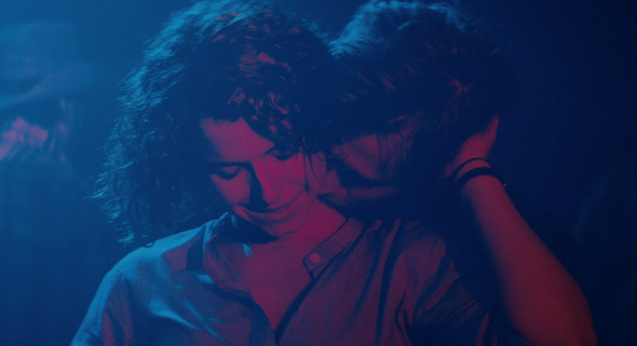
Your two leads, Johnny Flynn and particularly Jessie Buckley who plays Moll have to deliver these incredibly highly emotional performances. I guess I’m wondering, was it a challenge to cast those roles, and was it a challenge to sort of get Jessie in particular to that place where she’s so highly wrought?
It took quite a bit of time to cast because I was very aware that it was a performance-driven film. It doesn’t try to operate effectively enough on just purely genre terms. If anything, the genre is the sort of dressing or it’s the Trojan Horse, but, really, we’re smuggling in a character film [laughs]. So I knew it was going to succeed or fail based on the performances, ultimately. And we did have many auditions for both parts, and, at some point, we made a decision halfway through that it doesn’t matter who the actor is. I’m very happy with it being a kind of unknown talent. Jessie had done a couple of TV gigs before, but it was her first film role. And in some ways, it was kind of great having an actor come on board that didn’t have any baggage because it meant that the character is definitely going to be an open question. You didn’t have any sort of preconceptions.
But with regard to Jessie, I wish I could take more credit, but much of it is just because she’s got very raw talent, and she’s very fearless in terms of the places that she is willing to go. So Jessie kind of dives in head first. Also in a very playful way. It’s not like she’s an intense method actor. It’s very much a sense of play and exploration on set, and what was great is that we had a really long lead-up time before the shoot, like six months. And we met quite regularly, and we exchanged ideas, and books, and movies, and pieces of music, and we just talked a lot around the character and different people we knew. And it really helped us tune in to each other’s frequency because, obviously, on a low-budget film, you don’t have that much time on set to do many takes, and you don’t have much time in rehearsal.
So that just created a really healthy sort of toolbox of ideas so that when it came to set, in the limited time that we had, we could sort of play a bit, and we could continue to sculpt the character, as opposed to having long, protracted discussions about what they did when they were 13 because we’d already done all of that for both Jessie and Johnny. They’re not just actors. They’re kind of filmmakers. And I really like inviting the actors into the process, and they kind of enlivened it more because it was a constant discussion with them. It was a very collaborative atmosphere, and we kind of pushed each other.


